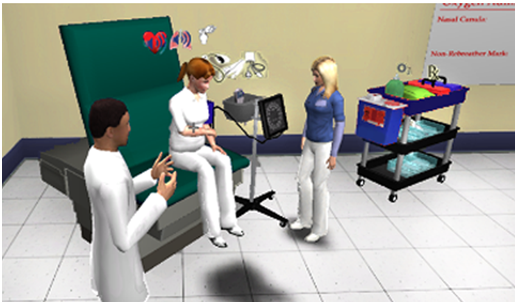Developing Virtual Reality Simulations for Office-Based Medical Emergencies
DOI:
https://doi.org/10.4101/jvwr.v9i1.7184Keywords:
virtual reality simulation, office-based medical emergencies, design-based research, medical simulationAbstract
Virtual reality simulation may significantly benefit a geographically dispersed learner demographic in the medical outpatient setting. Our research used an immersive virtual reality platform as a novel way to recreate high-risk medical scenarios targeted for office-based emergencies. Using a design-based research approach we designed virtual-reality-based simulation scenarios to prepare interprofessional office personnel for emergencies. Learners were connected using laptop computers, via a browser interface, with learner controlled team member avatars and educator controlled patient avatars. The virtual environment was modeled after a multi-provider healthcare office setting in a large suburban health network. Evaluation occurred via post-event surveys and feedback transcribed from video recordings and debriefings. Three office-based emergency scenarios were created (chest pain, respiratory distress/allergic reaction, and suicidal risk), with progressively smaller changes to the virtual environment with each iterative improvement. In total, 18 individuals representative of a typical outpatient office interprofessional care team participated in the pilot study. Qualitative design-related feedback from participants and faculty improved the educational environment, artifacts, and scenarios. Participant feedback was overwhelmingly positive and enthusiastic about the use of virtual reality-based simulations to explore teamwork, build scope of practice, and rehearse infrequently used clinical skills. We successfully created novel outpatient virtual reality simulations in a first-person-perspective virtual environment. Pilot testing revealed successful rapid development, implementation, and participant orientation, with the ability to present learning opportunities. Future efforts will include assessments and attempt to overcome development barriers by switching to a more versatile platform.


